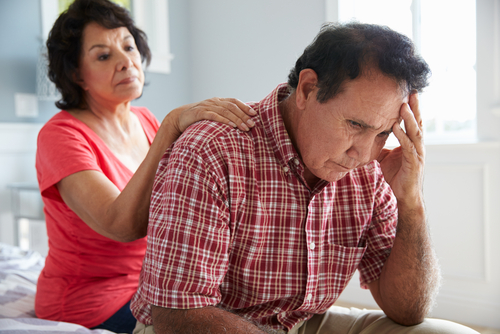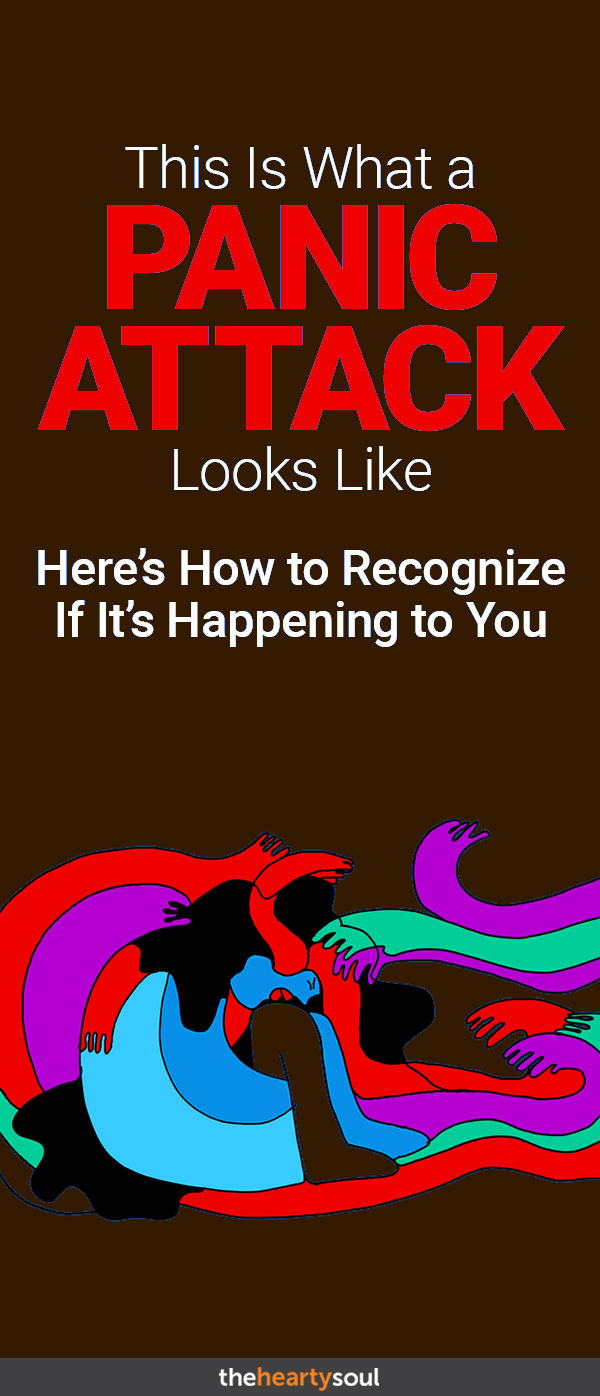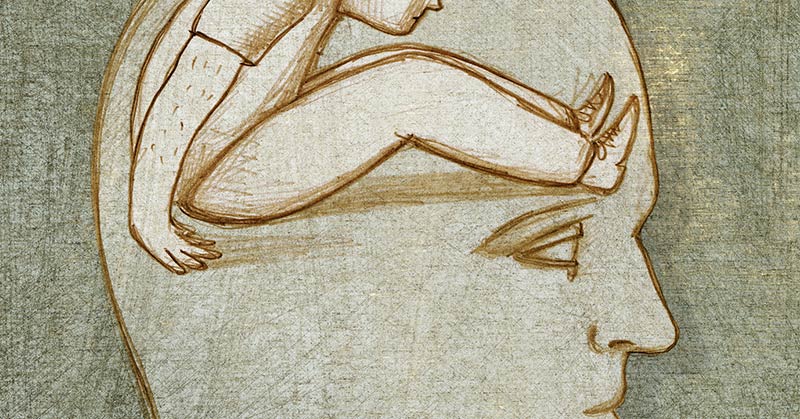Anxiety disorder is a severely misunderstood condition, that is so often assumed to be associated with general stress and worry that is common to day to day living. For this reason, people with anxiety and panic disorder shy away from being vocal about their experiences out of fear of being dismissed or rejected from those around them.
A moment on the NBC’s breakout show titled, “This Is Us”, went viral for a very important reason. It not only portrays what it’s like to experience a panic attack, but how you should behave if someone you know is having one.
In the poignant scene, Randall Pearson (played by Sterling K. Brown) calls his brother Kevin Pearson (Justin Hartley) to inform him that he will not be able to see his play. When Kevin responds irritatedly at Randall’s last-minute cancellation, Randall fails to reciprocate emotion, maintaining a quivering voice, and distracted presence. It then becomes painfully clear to Kevin that Randall is in a state of troubling anxiety. Kevin quickly decides to abandon his show, seconds before it is scheduled to start, to see his suffering brother.
Watch the moving scene between the two brothers below:
The scene immediately gained praise from viewers everywhere, for its honest depiction of anxiety and panic disorder. Many people identified with Randall’s nuanced portrayal of a panic attack, that began seemingly unexpectedly, and soon progressed into him entering a state of dissociation, and eventual trembling, and tearful collapse on the floor.
An added element to the scene was the quick flashback into Randall and Kevin’s youth, where an awkward Kevin witnesses Randall in a state of panic, but deliberately chooses to ignore his distressed brother. Contrasted against, adult Kevin’s more compassionate response to Randall’s panic attack, the scene perfectly demonstrated how to support those with anxiety, and made for a heart-warming exchange between two grown men.
What is Anxiety?
Generalized anxiety disorder is a mental health disorder characterized by excessive feelings of anxiety and fear that affects an estimate of 6.8 million Americans. The distinction between anxiety disorder and common anxiety is when the feelings of stress and worriedness persist beyond a given time and prevent you from regularly functioning in your daily life. Panic attacks, like the one experienced by Randall, and panic disorder, are often coupled with anxiety. It is also not uncommon for those suffering from anxiety to experience depression or vice versa.
How Do You Recognize Signs of a Panic Attack?
Panic episodes can range in symptoms and severity, but are known to be abrupt in onset, and display at least four of the following symptoms, as taken from the Anxiety and Depression Association of America:
- Palpitations, pounding heart, or accelerated heart rate
- Sweating
- Trembling or shaking
- Sensations of shortness of breath or smothering
- Feelings of choking
- Chest pain or discomfort
- Nausea or abdominal distress
- Feeling dizzy, unsteady, light-headed, or faint
- Chills or heat sensations
- Paresthesia (numbness or tingling sensations)
- Derealization (feelings of unreality) or depersonalization (being detached from oneself)
- Fear of losing control or “going crazy”
- Fear of dying
What to Do If You Are Having a Panic Attack

If you find yourself experiencing four or more of the above symptoms, you are having a panic attack. You are beyond the stage of ‘don’t panic’, and frankly, that empty phrase does not apply in this situation. Here are four widely accepted methods of how to deal with a panic attack naturally:
1. Acknowledge your panic attack
Accept that you are in a state of panic, anxiety often arises when you fixate on the worst possible situation, instead of focusing on blinding thoughts about the future, acknowledge your present position. Familiarize yourself with your surroundings, and what you were doing before the panic arose.
2. Breathe
During a panic attack, it is common to feel like your lungs are collapsing, and develop short, irregular breathing. If you are breathing uncontrollably, do your best to take deep breaths, inhaling and exhaling for 5 seconds at a time. This will effectively steady your breath, and restore natural breathing patterns.
3. Progressive muscle relaxation
This technique was developed by American physician, Dr. Edmund Jackobson, in the 1920s, and has shown to be quite effective in diffusing panic attacks. To perform progressive muscle relaxation, systematically constrict and relax various muscle groups from your feet upward or your head downward in a gradual manner. It works by reducing bodily tension and increasing physical awareness, to ultimately bring about calmness to those suffering from anxiety.
4. Talk through it
While it may seem like the world is collapsing, and you are on the verge of death, panic attacks are in fact, harmless. Reaching their peak between 5 and 10 minutes, they tend to subside by 30 minutes. Talk through your panic attack, tell yourself you are going to be okay, and that it will pass.
How to Help Someone Through a Panic Attack

If you are around someone who is having a panic attack, you have the capacity to make that person feel better. Here are four ways, you can be a comforting source to someone experiencing a panic attack.
1. Remain with them
Keep by the person’s side, throughout the course of the attack. If left alone, their anxiety is likely to worsen, and persist for longer.
2. Relocate them to a quiet place
If the attack occurs in a public, or disruptive space, lead the person having an attack to a quiet, more secluded space. There, they can avoid unwanted stimulation that may further trigger their anxiety.
3. Assure them they are going to be ok
Do not tell the person having an attack what they should do, or how they should feel. This can be incredibly insensitive and belittling of their condition. Instead, assure them that they will get through this and that you are there to help.
4. Encourage them to breathe
Breathing is an essential part of managing a panic attack. Tell the person having an attack to take slow, deep breaths, inhaling and exhaling for 5 seconds at a time. Make sure to use a steady, calm voice when instructing them to do so.
Help Is Out There!
If you or someone you know struggles with anxiety or panic disorder, understand that help is available. Talking to a professional about your experiences can be an extremely rewarding step in the right direction. Despite how pervasive the negative stigma surrounding mental illness is in today’s society, shows like “This Is Us”, reaffirm that if you are suffering, you are not alone. There are plenty of resources available for you to get better.

Sources
- Barrera, T. L., Grubbs, K. M., Kunik, M. E., & Teng, E. J. (2014). A review of cognitive behavioral therapy for panic disorder in patients with chronic obstructive pulmonary disease: the rationale for interoceptive exposure. Journal of clinical psychology in medical settings, 21(2), 144-154.
- Holland, J. C., Morrow, G. R., Schmale, A., Derogatis, L., Stefanek, M., Berenson, S., … & Feldstein, M. (1991). A randomized clinical trial of alprazolam versus progressive muscle relaxation in cancer patients with anxiety and depressive symptoms. Journal of Clinical Oncology, 9(6), 1004-1011.
- Meuret, A. E., Wilhelm, F. H., & Roth, W. T. (2004). Respiratory feedback for treating panic disorder. Journal of Clinical Psychology, 60(2), 197-207.

